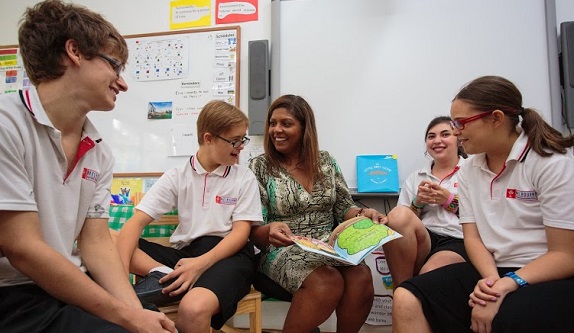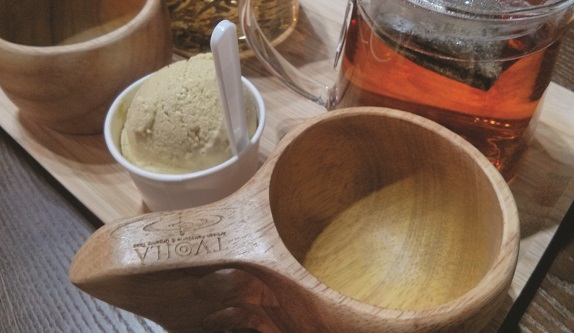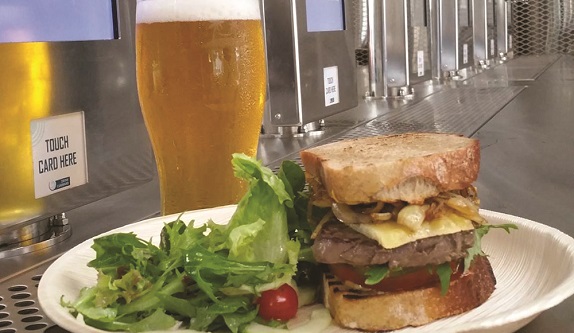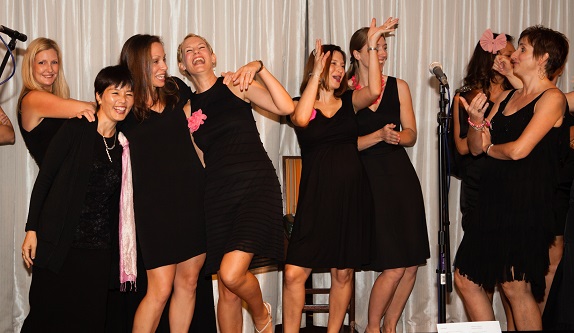If you’re wondering what gifts to give out this holiday season, there’s plenty of alternatives to material possessions, Lee Carsley says.
 CREDIT ALAN PETO
CREDIT ALAN PETO
In the episode ‘She of Little Faith’ from The Simpsons, Lisa converts to Buddhism. Reverend Lovejoy tries to dissuade her by saying she can’t celebrate Christmas because ‘Santa doesn’t leave presents under the Bodhi tree’. Richard Gere puts things right, explaining Buddhists believe all religions founded on love and compassion are valid spiritual paths.
So you can eat your Christmas cake and still be Buddhist, although excessive consumption of said cake may highlight there is no inherent difference between an object of attachment and an object of aversion (‘You just love this cake – your third piece… What’s the matter, aren’t you feeling well?).
Many religions celebrate during November and December, like Deepavali (Hindi), Niiname (Shinto) Festival, Birth of Baha’u’llah and Ascension of Abdu’l-Bah (Bahá’í) Hannukah (Jewish) and Bodhi Day (Buddhism). At some time in their religious calendar, they venerate the life and death of their deity (in Buddhism, it is May).
I like that the spiritual values of a Christian Christmas (or a Buddhist Lent or a Hari Raya), are echoed throughout the year. Particularly Singapore this year, where the Christmas lights went up on Orchard Road, while Deepavali was still being celebrated. No one thought that was unusual. As a Buddhist, the gifts to give or receive are not so different from other spiritual paths.
‘Thoughtful’ Gifts: Buddhists strive for non-attachment to material things, so stocking stuffers are out. Gifts that have meaning for the other are ‘thoughtful’. Do you have a deeply religious Christian friend? Go with them to church to show you respect their faith. Do you have a friend that seems to be down? Give them a call, take them out for tea, talk or no talk.
Helpful gifts for those with less: Jesus’ birth was enabled by a family showing kindness to his mother and father, providing simple lodgings. Help someone, a close friend, family, or a stranger, without judgment (a young couple on a donkey turning up on your back step in the middle of the night wanting lodgings? Really?). Buy some grocery gift cards from a supermarket and give them to people in need.
Plant Seeds of Kindness: Hold the door open for a person with their hands full. Pay for the next five people in line behind you. Give a spontaneous hug to someone who looks like they need it. Expect no reciprocation. The ripple effect of being kind is truly remarkable (I guess that is why they call it karma).
Help an Animal: Buddhists believe that kindness must be practiced with all living beings (if we do not wish to be eaten, we should probably not eat others). Donate animal food to a charity like SOSD, offer to foster an abandoned or sick dog or cat. Buy a little toy for your own furry companion.
Do Loving-Kindness Meditation: Sometimes the gift is not so obvious. Loving-Kindness Meditation creates lasting positive change in you, your family and community. For the 12 days before Christmas, sing the song, and then spend five minutes each day sending loving thoughts to a respected person (such as a teacher, many Buddhists include Buddha), a loved one (such as a family member or close friend), a person you don’t know (that ‘faceless’ cashier at your supermarket), and a hostile person (someone you have difficulty with).
We are lucky in Singapore. So many calendar reminders about the practice of compassionate gift-giving and conscious living. Wishing Happy Deepavali, Joyful Vesak to others reinforces the common values of peace, loving-kindness, and dare I say it, universal love.
So for this time of year, for all my Christian friends around the world, I wish you a ‘Merry Christmas’.






 CREDIT ALAN PETO
CREDIT ALAN PETO




